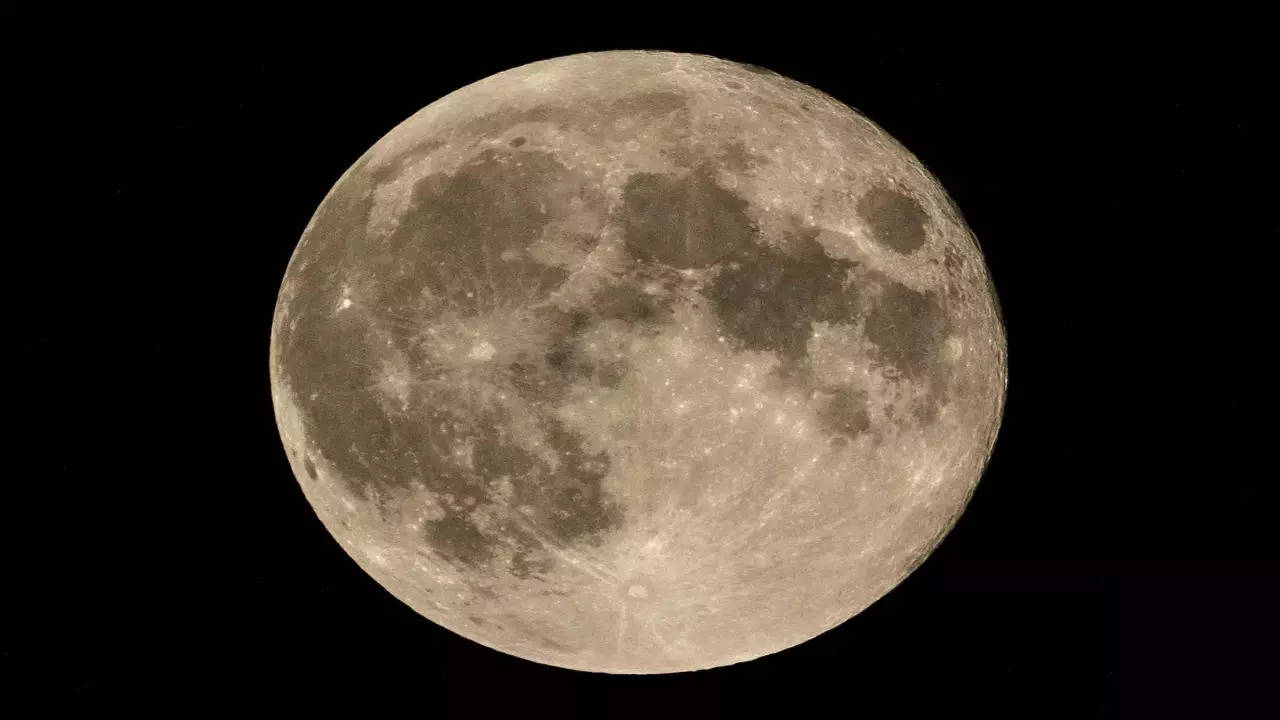[ad_1]
MUMBAI: It will likely be sci-fi turning into actuality on the Moon in 2025.
A Nasa-funded experiment known as Lusee-Evening (Lunar Floor Electromagnetic Experiment Evening) in collaboration with a couple of US laboratories is launching an experiment on the far facet of the Moon in 2025, which is able to hunt for historic radio alerts from the cosmic Darkish Ages over 14 billion years in the past.
Based on an announcement from the Lawrence Berkeley Nationwide Laboratory (Berkeley Lab), which is enjoying a key function on this formidable challenge, the Darkish Ages refers back to the time period after the Massive Bang when the primary stars and galaxies had been starting to type.
With an preliminary mission span of 18 months, the experiment, which is anticipated to offer a deeper understanding of the universe, will likely be flown to the Moon by Firefly Aerospace, a non-public organisation.
The challenge is a collaboration between NASA and the Division of Power, with companions from Berkeley Lab, Brookhaven Nationwide Laboratory (lead DOE lab), UC Berkeley and the College of Minnesota.
The Berkeley Lab workforce has began constructing the experiment’s antenna that may attempt to tune in to these historic radio waves.
“Should you’re on the far facet of the Moon, you’ve gotten a pristine, radio-quiet atmosphere from which you’ll attempt to detect this sign from the Darkish Ages,” stated Kaja Rotermund, a postdoctoral researcher at Berkeley Lab, who’s engaged on the antenna.
“LuSEE-Evening is a mission exhibiting whether or not we will make these sorts of observations from a location that we’ve by no means been in, and in addition for a frequency vary that we’ve by no means been in a position to observe,” she acknowledged.
Based on the Berkeley Lab, such historic alerts can’t be measured from the Earth as a result of the environment absorbs, refracts and displays the radio sign earlier than it ever reaches devices on the bottom. Even when it might, the radio sign could be drowned out by noise from our personal electronics and communications, it stated.
The Moon acts as a defend, blocking out radio waves from the Earth. And by gathering knowledge solely in the course of the two-week lunar night time, the experiment may also block out radio waves from the Solar.
LuSEE-Evening should function in temperatures round -280 levels Fahrenheit, then climate an excessive swing to 250 levels Fahrenheit throughout lunar day, when it’s going to recharge its batteries. And since the far facet of the Moon by no means faces the Earth, direct communication with the experiment is unattainable.
LuSEE-Evening should ship all its knowledge by way of a relay satellite tv for pc that passes overhead.
LuSEE-Evening will pay attention for frequencies between 0.5 and 50 megahertz, although it’s doubtless that future, extra delicate experiments will likely be wanted to search out the faint sign. “We’re searching for this very tiny dip that’s doubtlessly the Darkish Ages sign,” Rotermund stated.
A Nasa-funded experiment known as Lusee-Evening (Lunar Floor Electromagnetic Experiment Evening) in collaboration with a couple of US laboratories is launching an experiment on the far facet of the Moon in 2025, which is able to hunt for historic radio alerts from the cosmic Darkish Ages over 14 billion years in the past.
Based on an announcement from the Lawrence Berkeley Nationwide Laboratory (Berkeley Lab), which is enjoying a key function on this formidable challenge, the Darkish Ages refers back to the time period after the Massive Bang when the primary stars and galaxies had been starting to type.
With an preliminary mission span of 18 months, the experiment, which is anticipated to offer a deeper understanding of the universe, will likely be flown to the Moon by Firefly Aerospace, a non-public organisation.
The challenge is a collaboration between NASA and the Division of Power, with companions from Berkeley Lab, Brookhaven Nationwide Laboratory (lead DOE lab), UC Berkeley and the College of Minnesota.
The Berkeley Lab workforce has began constructing the experiment’s antenna that may attempt to tune in to these historic radio waves.
“Should you’re on the far facet of the Moon, you’ve gotten a pristine, radio-quiet atmosphere from which you’ll attempt to detect this sign from the Darkish Ages,” stated Kaja Rotermund, a postdoctoral researcher at Berkeley Lab, who’s engaged on the antenna.
“LuSEE-Evening is a mission exhibiting whether or not we will make these sorts of observations from a location that we’ve by no means been in, and in addition for a frequency vary that we’ve by no means been in a position to observe,” she acknowledged.
Based on the Berkeley Lab, such historic alerts can’t be measured from the Earth as a result of the environment absorbs, refracts and displays the radio sign earlier than it ever reaches devices on the bottom. Even when it might, the radio sign could be drowned out by noise from our personal electronics and communications, it stated.
The Moon acts as a defend, blocking out radio waves from the Earth. And by gathering knowledge solely in the course of the two-week lunar night time, the experiment may also block out radio waves from the Solar.
LuSEE-Evening should function in temperatures round -280 levels Fahrenheit, then climate an excessive swing to 250 levels Fahrenheit throughout lunar day, when it’s going to recharge its batteries. And since the far facet of the Moon by no means faces the Earth, direct communication with the experiment is unattainable.
LuSEE-Evening should ship all its knowledge by way of a relay satellite tv for pc that passes overhead.
LuSEE-Evening will pay attention for frequencies between 0.5 and 50 megahertz, although it’s doubtless that future, extra delicate experiments will likely be wanted to search out the faint sign. “We’re searching for this very tiny dip that’s doubtlessly the Darkish Ages sign,” Rotermund stated.
[ad_2]



